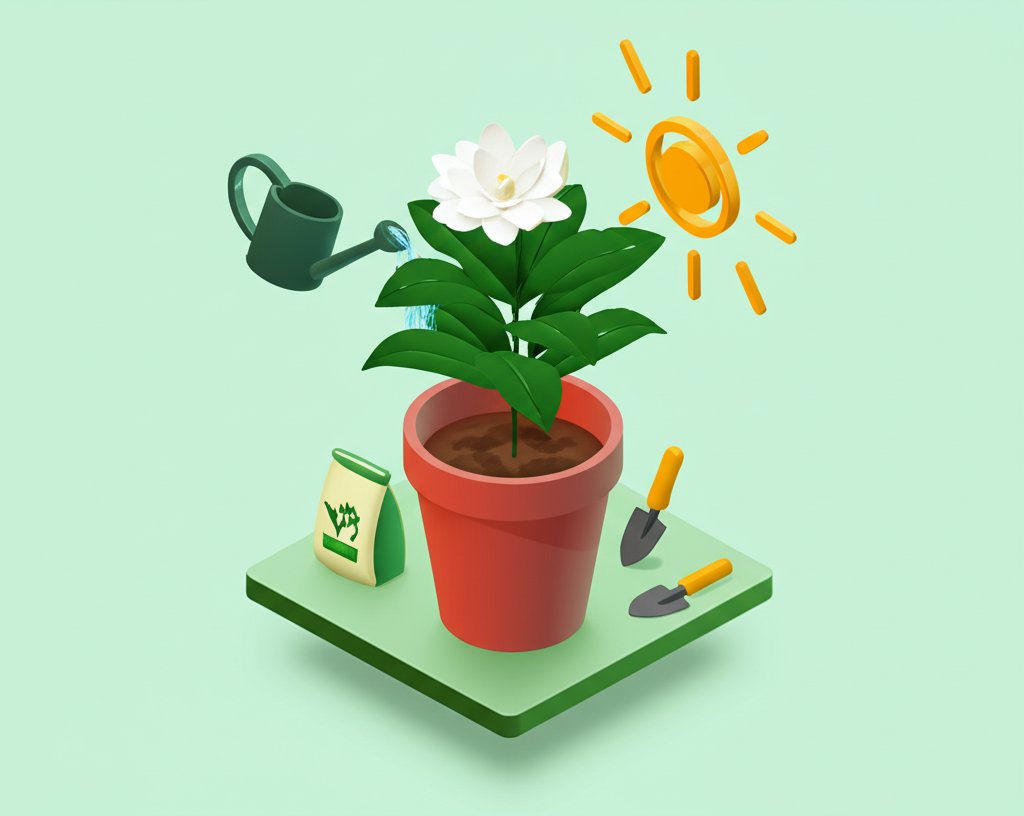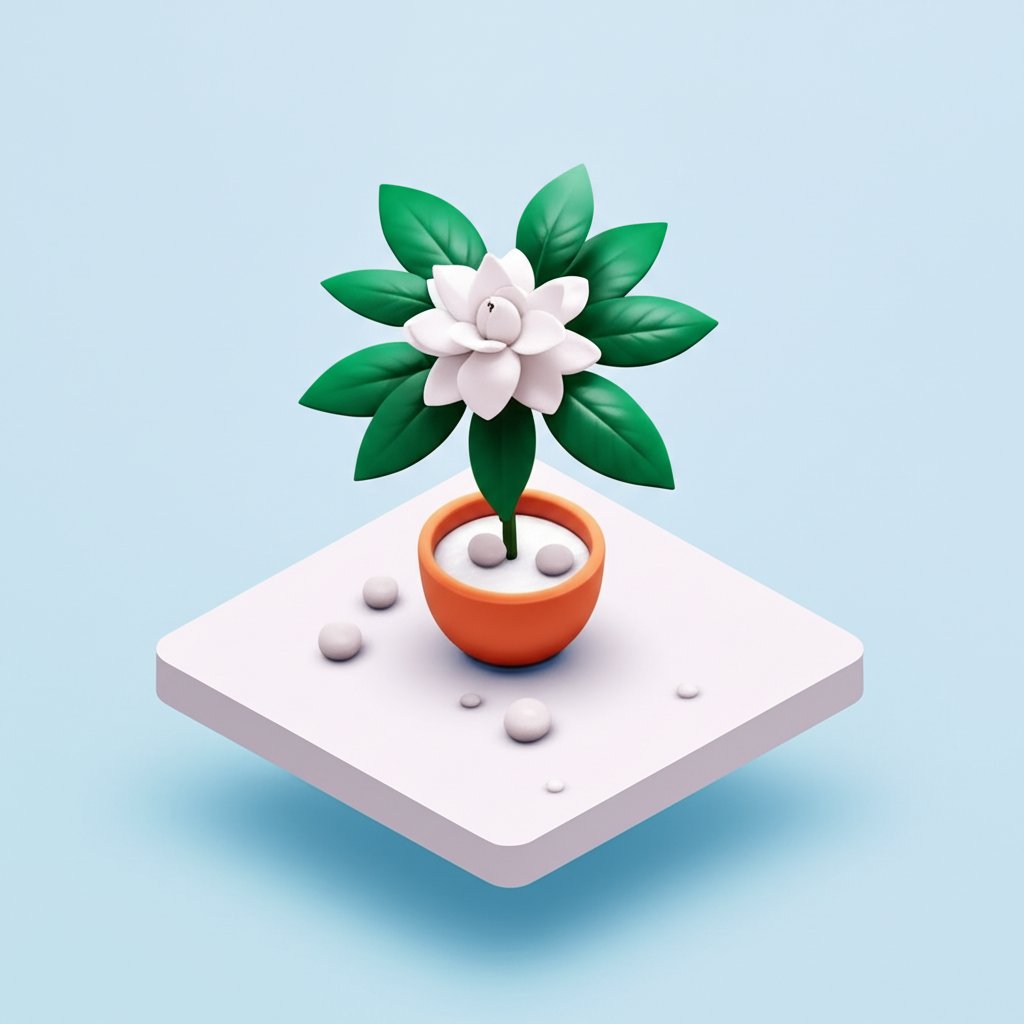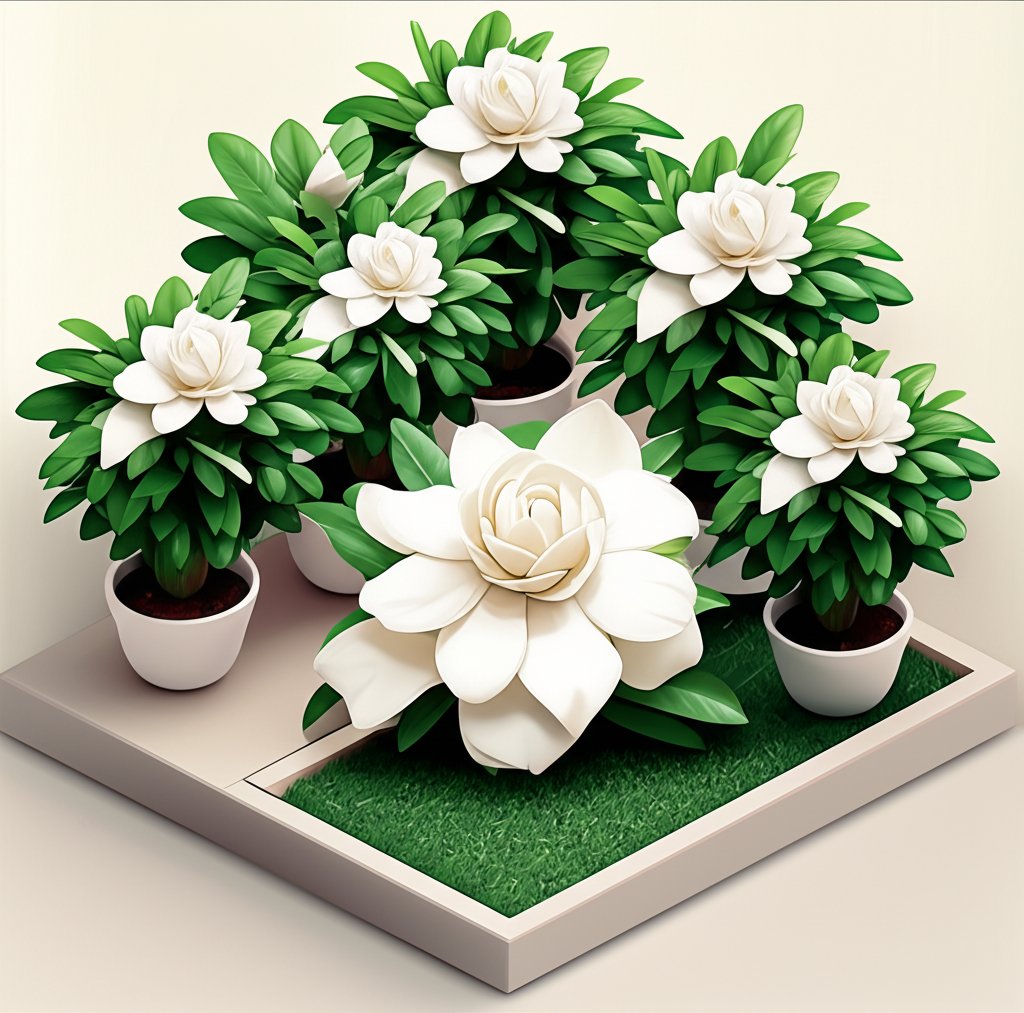The intoxicating fragrance and pristine white blooms of the Cape Jasmine, often lovingly referred to as the Augusta Gardenia, make it a jewel in any garden. This beloved evergreen shrub, scientifically known as Gardenia jasminoides (formerly Gardenia augusta), can seem temperamental, but with expert cape jasmine care, you can cultivate a thriving plant that graces your landscape with unparalleled beauty and aroma.
This comprehensive guide will equip you with all the knowledge to transform your gardenia-growing experience from challenging to triumph. From understanding its specific environmental needs to mastering advanced care techniques, prepare to unlock the secrets to robust growth and abundant, fragrant blossoms.
Understanding Your Augusta Gardenia (Cape Jasmine): Unraveling the Names and Why It Matters

Before diving into the specifics of care, let’s clarify the nomenclature that often causes confusion. The plant we adore for its glossy leaves and exquisite flowers is most accurately known as Gardenia jasminoides.
Why “Augusta Gardenia” and “Cape Jasmine”?
- Augusta Gardenia: This term primarily stems from an older, now less frequently used botanical name, Gardenia augusta. While Gardenia jasminoides is the currently accepted scientific name, “Augusta Gardenia” persists as a common and cherished moniker, particularly in the Southern US, evoking a sense of classic elegance. It does not imply the plant originates from Augusta, Georgia, though the city is famously nicknamed “The Garden City.”
- Cape Jasmine: This common name likely originated from the plant’s jasmine-like fragrance and its historical association with the Cape of Good Hope, a major trading route although the plant is native to Asia. It’s widely used and accurately describes Gardenia jasminoides.
- Botanical Family: All these names refer to the same species of evergreen shrub belonging to the Rubiaceae family, renowned for its glossy dark green foliage and waxy, fragrant white flowers.
Understanding these interchangeable names is the first step toward confident cape jasmine care, as they all refer to the same plant with the same care requirements.
Laying the Foundation: Ideal Environment for Thriving Cape Jasmines

The success of your Augusta Gardenia hinges on providing the perfect start. Mimicking its natural habitat is key to a flourishing plant.
Soil: The Root of All Success
Gardenias are notoriously picky about their soil. They demand a slightly acidic environment to properly absorb nutrients.
- Ideal pH: Aim for a soil pH between 5.0 and 6.0. Soil that is too alkaline (pH above 6.0) is the leading cause of yellowing leaves (chlorosis) due to iron deficiency.
- Drainage is Non-Negotiable: Gardenias abhor “wet feet.” The soil must be well-draining yet retain consistent moisture. Sandy loams enriched with organic matter are ideal.
- Amending Your Soil:
- To lower pH: Incorporate elemental sulfur, peat moss, or composted pine bark into the planting hole.
- To improve drainage: Add perlite or coarse sand to heavy clay soils.
- For container plants: Use a high-quality, acidic potting mix formulated for acid-loving plants, often containing peat moss.
Light: The Goldilocks Principle
Finding the “just right” amount of sunlight is crucial for bumper blooms and healthy foliage.
- Partial Shade is Preferred: Most Augusta Gardenia varieties thrive in partial shade, receiving 4-6 hours of sun daily.
- Morning Sun, Afternoon Shade: This combination is often ideal, especially in hotter climates (USDA Zones 8-11). Morning sun provides gentle warmth and light for photosynthesis, while protection from intense afternoon sun prevents leaf scorch and stress.
- Full Sun Tolerance: In cooler regions (e.g., northern parts of Zone 8), some cultivars can tolerate more direct sun, up to 6+ hours, provided consistent moisture is maintained.
- Signs of Incorrect Light:
- Too much sun: Yellowing leaves with brown edges, stunted growth, fewer blooms.
- Too little sun: Leggy growth, pale leaves, very few or no flowers.
Temperature & Humidity: Crucial for Blooming
Gardenias appreciate warmth but are sensitive to extreme fluctuations.
- Optimal Temperature Range: For robust growth and flower bud development, maintain temperatures between 60-75°F (15-24°C). Temperatures outside this range, especially sudden drops, can cause bud drop.
- Humidity Lovers: These tropical beauties crave high humidity.
- Outdoor Plants: Natural humidity is usually sufficient. In very dry climates, consider grouping plants, using a humidifier nearby for container plants, or misting foliage in the early morning (avoiding evening misting to prevent fungal issues).
- Indoor Plants: Place pots on pebble trays filled with water (ensuring the pot doesn’t sit directly in the water). Misting can offer temporary relief but isn’t a long-term solution.
The Daily Ritual: Watering, Feeding, and Pruning for Peak Blooms
Consistent and thoughtful care practices are the backbone of successful cape jasmine care.
Watering Requirements: The Art of Consistency
Consistent moisture is paramount, but overwatering is a common killer.
- Feel the Soil: The best indicator is the soil itself. Allow the top 1-2 inches of soil to dry out slightly before watering again.
- Deep and Thorough: When you water, do so deeply until water drains from the bottom of the pot (for containers) or thoroughly saturates the root zone (for in-ground plants). This encourages deep root growth.
- Avoid Overhead Watering: Water at the base of the plant to minimize leaf wetness, which can encourage fungal diseases.
- Seasonal Adjustments: Water less frequently during cooler, dormant periods (fall and winter) and more frequently during hot, dry spells and the active growing/blooming season.
- Signs of Improper Watering:
- Underwatering: Wilting leaves, crispy edges, stunted growth.
- Overwatering: Yellowing leaves, wilting despite wet soil, leaf drop, mushy stems (signs of root rot).
Fertilizing: Fueling Growth and Fragrance
Gardenias are heavy feeders, especially during their active growth and blooming periods.
- Acid-Loving Formulas: Use a fertilizer specifically formulated for acid-loving plants, such as azaleas, camellias, and rhododendrons. These fertilizers often contain micronutrients like iron, critical for gardenias.
- NPK Ratio: Look for a balanced NPK (Nitrogen-Phosphorus-Potassium) ratio like 10-10-10 or a slightly higher phosphorus content to encourage blooms, e.g., 5-10-5.
- Application Schedule:
- Growing Season (Spring to Mid-Summer): Fertilize every 4-6 weeks according to product instructions.
- Late Summer/Fall: Reduce or stop fertilizing. New growth encouraged late in the season can be damaged by winter cold.
- Winter: Do not fertilize when the plant is dormant.
- Chelated Iron: If leaves remain yellow despite proper soil pH and regular feeding, a foliar spray or soil drench of chelated iron can provide a quick boost.
Pruning and Shaping Your Gardenia: Encouraging Bushiness and Blooms
Pruning maintains plant health, promotes air circulation, encourages new growth, and enhances flowering.
- When to Prune: The best time to prune your Augusta Gardenia is immediately after its main flowering season (typically late spring to early summer). Pruning too late in the season can remove developing flower buds for the next year.
- What to Prune:
- Dead, Damaged, or Diseased Branches: Remove these immediately upon discovery to prevent the spread of problems.
- Crossing Branches: Cut out branches that rub against each other to improve air circulation and prevent wounds.
- Leggy Growth: Trim back long, spindly stems to encourage bushier growth.
- Shaping: Lightly prune to maintain your desired size and shape.
- Spent Flowers (Deadheading): While not strictly necessary, deadheading faded blooms can redirect the plant’s energy into producing more flowers rather than seeds.
Winter Protection: Preparing for Colder Months
While largely evergreen, cape jasmine care in colder zones requires winter preparation.
- Mulching: Apply a 2-4 inch layer of organic mulch (pine bark, pine needles) around the base of the plant in late fall. This insulates roots, conserves moisture, and slowly acidifies the soil.
- Container Plants: Move potted gardenias indoors to a bright, cool location (45-60°F / 7-15°C) before the first hard frost. Reduce watering during their indoor dormancy.
- In-Ground Plants (Borderline Zones): For those in USDA Zone 8, consider covering plants with burlap or frost cloth during severe cold snaps. Ensure adequate watering before a freeze.
Propagation and Cultivars: Expanding Your Gardenia Collection
Once you’ve mastered cape jasmine care, you might want to propagate your favorites or explore diverse varieties.
Propagating via Cuttings: A Step-by-Step Guide
Gardenias are relatively easy to propagate from stem cuttings.
- Timing: Take cuttings in late spring or early summer after the main flush of blooms.
- Selection: Choose healthy, non-flowering stems about 4-6 inches long from the current season’s growth. Avoid woody or overly soft stems.
- Preparation:
- Remove leaves from the bottom 2 inches of the cutting.
- Dip the cut end into rooting hormone (optional but recommended for better success).
- Planting: Insert the cuttings into a well-draining rooting medium (e.g., a mix of peat moss and perlite) in small pots.
- Environment: Create a humid environment by covering the pots with a clear plastic bag or dome. Place in a warm, bright location out of direct sunlight.
- Care: Keep the rooting medium consistently moist. Roots typically form within 4-8 weeks.
- Transplanting: Once a robust root system has developed, carefully transplant into larger pots or their final garden location.
Popular Augusta Gardenia (Cape Jasmine) Cultivars
The world of Gardenia jasminoides offers a delightful array of options, each with unique characteristics. When choosing your Augusta Gardenia, consider its mature size, flower type, and cold hardiness.
- ‘August Beauty’: One of the most popular, living up to the “Augusta” name. Known for its profuse, fragrant, double white blooms and upright growth habit.
- ‘Veitchii’: Another classic, prized for its exceptionally fragrant, double white flowers that often bloom in multiple flushes.
- ‘Crown Jewel’: A compact, cold-hardy variety, making it excellent for smaller gardens, containers, or cooler climates. Features fragrant, double white flowers.
- ‘Pinwheel’: Distinctive for its single, pinwheel-shaped flowers. Offers a unique aesthetic with strong fragrance.
- ‘Radicans’: A dwarf, low-growing groundcover variety with small, fragrant white flowers. Ideal for borders or rock gardens.
- ‘Kleim’s Hardy’: Valued for superior cold hardiness and fragrant, single white flowers.
- ‘Frostproof’: As the name suggests, this cultivar offers increased cold tolerance and fragrant, single white blooms.
Troubleshooting Common Augusta Gardenia Challenges
Even with the best cape jasmine care, these plants can encounter issues. Knowing how to diagnose and treat problems quickly is key to their long-term health.
Yellowing Leaves (Chlorosis): A Common Frustration
This is one of the most frequent complaints from gardenia growers.
- Cause: Most often, it’s a sign of iron deficiency due to alkaline soil pH (too high), which prevents the plant from absorbing iron. It can also be caused by overwatering, poor drainage, or nutrient deficiencies.
- Solution:
- Test Soil pH: Confirm the pH is too high.
- Amend Soil: Apply sulfur or peat moss to lower pH.
- Chelated Iron: Apply a chelated iron supplement as a foliar spray or a soil drench for a quick green-up.
- Improve Drainage: Ensure adequate drainage to prevent root issues.
Pests: Unwanted Visitors
Several common garden pests find gardenias appealing. Regular inspection is your best defense.
- Aphids: Small, soft-bodied insects that cluster on new growth, causing distorted leaves.
- Whiteflies: Tiny, white, winged insects found on the undersides of leaves, flying up in clouds when disturbed.
- Mealybugs: Cottony, white insects that hide in leaf axils and crevices.
- Scale: Small, immobile bumps on stems and leaves, often accompanied by sticky honeydew.
- Spider Mites: Tiny arachnids that cause stippling on leaves and fine webbing, especially in dry conditions.
- Treatment:
- Horticultural Oil/Insecticidal Soap: Effective against most soft-bodied pests. Apply thoroughly, coating all plant surfaces.
- Neem Oil: An organic option that disrupts insect feeding and reproduction.
- Strong Water Spray: Can dislodge aphids and mites.
- Systemic Insecticides: For severe infestations, consult a local garden center for appropriate systemic options. Always follow product instructions carefully.
Diseases: Fungal Foes
Most gardenia diseases are fungal and related to environmental conditions.
- Root Rot: Caused by overwatering and poor drainage. Symptoms include wilting, yellowing, and eventual plant death.
- Solution: Improve drainage, reduce watering frequency. For potted plants, repot into fresh, well-draining soil, trimming any black, mushy roots.
- Canker: Fungal disease causing sunken, discolored lesions on stems, which can girdle and kill branches.
- Solution: Prune out affected branches immediately, making cuts into healthy wood. Sterilize pruning tools between cuts. Improve air circulation.
- Sooty Mold: A black, fuzzy growth on leaves, often a secondary problem caused by honeydew excreted by aphids, whiteflies, or scale.
- Solution: Treat the primary pest infestation. The sooty mold will eventually flake off.
Bud Drop: When Blooms Don’t Open
Flower buds form but drop before opening.
- Causes: Often stress-related, including:
- Sudden temperature fluctuations (too hot or too cold).
- Inconsistent watering (too dry or too wet).
- Low humidity.
- Nutrient deficiencies.
- Pest infestations.
- Solution: Provide consistent cape jasmine care – steady temperatures, proper watering, and high humidity, and address any underlying pest or nutrient issues.
Beyond the Basics: Advanced Tips for Spectacular Cape Jasmine Displays
Elevate your Augusta Gardenia growing with these advanced insights.
Container Growing: A Portable Fragrance
Gardenias excel in containers, allowing you to move them to ideal conditions.
- Pot Size: Start with a pot 1-2 sizes larger than the root ball. Repot every 2-3 years as the plant grows.
- Potting Mix: Use a high-quality, acidic potting mix specifically designed for acid-loving plants.
- Drainage: Ensure the pot has ample drainage holes.
- Watering: Container plants dry out faster than in-ground plants, so monitor moisture levels closely.
- Feeding: Regular fertilization is essential as nutrients leach out of pots more quickly.
Maximizing Fragrance: The Gardenia’s Signature Trait
While most Gardenia jasminoides are incredibly fragrant, you can optimize their aroma.
- Optimal Health: A healthy, well-cared-for plant will naturally produce more potent fragrances. Provide ideal soil, light, and nutrients.
- Temperature: Slightly warmer daytime temperatures (70-75°F / 21-24°C) can enhance fragrance release.
- Humidity: High humidity helps to disperse the delicate scent molecules.
- Highly Fragrant Cultivars: Varieties like ‘Veitchii’, ‘August Beauty’, and ‘Miami Supreme’ are particularly known for their intense sillage.
Companion Planting: Creating a Harmonious Landscape
Pairing your Augusta Gardenia with the right companions can enhance its beauty and health.
- Acid-Loving Companions: Choose plants that also thrive in acidic soil and partial shade, such as azaleas, camellias, hydrangeas, or ferns.
- Complementary Colors: Plants with blue or purple flowers (like certain hydrangeas) can wonderfully complement the pure white of gardenia blooms.
- Groundcovers: Low-growing plants can help retain soil moisture and suppress weeds. ‘Radicans’ gardenia itself makes an excellent fragrant groundcover.
Conclusion: Your Journey to Beautiful Gardenias
Cultivating the exquisite Augusta Gardenia or cape jasmine is a truly rewarding endeavor. By understanding its specific needs for acidic soil, consistent moisture, and appropriate light, and by vigilantly addressing any challenges, you will be rewarded with a shrub that not only adds unparalleled beauty to your garden but also fills the air with its legendary, intoxicating fragrance.
Embrace these expert cape jasmine care guidelines, and watch your gardenias flourish, becoming the fragrant focal point you’ve always dreamed of.
Frequently Asked Questions (FAQ) about Cape Jasmine Care
Q1: What is the difference between Cape Jasmine and Augusta Gardenia?
A1: Cape Jasmine and Augusta Gardenia generally refer to the same plant: Gardenia jasminoides. “Augusta Gardenia” comes from an older botanical name, Gardenia augusta. Both common names describe the fragrant, white-flowered evergreen shrub known botanically as Gardenia jasminoides.
Q2: Do Cape Jasmines need full sun or shade?
A2: Most Cape Jasmines (Augusta Gardenias) prefer partial shade, ideally receiving 4-6 hours of morning sun and protection from intense afternoon sun, especially in hot climates. Too much sun can scorch leaves, while too little sun can reduce blooms.
Q3: What kind of soil is best for Augusta Gardenias?
A3: Augusta Gardenias thrive in slightly acidic soil with a pH between 5.0 and 6.0. The soil must also be well-draining yet capable of retaining consistent moisture. Amend heavy soils with organic matter like peat moss or composted pine bark to improve drainage and acidity.
Q4: How often should I water my Cape Jasmine?
A4: Water your Cape Jasmine consistently to keep the soil moist, but never soggy. Allow the top 1-2 inches of soil to dry out slightly before watering again. Deep watering is preferred, ensuring water reaches the entire root zone. Reduce watering in cooler, dormant periods.
Q5: When is the best time to fertilize an Augusta Gardenia?
A5: Fertilize your Augusta Gardenia during its active growing season, typically from spring through mid-summer. Use a fertilizer specifically formulated for acid-loving plants (e.g., azalea/camellia food) every 4-6 weeks according to product instructions. Do not fertilize in fall or winter.
Q6: Why are my Cape Jasmine leaves turning yellow?
A6: Yellowing leaves (chlorosis) in Cape Jasmines are most commonly caused by alkaline soil pH (too high), which prevents the plant from absorbing essential nutrients like iron. Other causes can include overwatering, poor drainage, or other nutrient deficiencies. Test your soil pH and amend as needed, and consider a chelated iron supplement.
Q7: When should I prune my Augusta Gardenia?
A7: The best time to prune your Augusta Gardenia is immediately after its main flowering season, typically in late spring or early summer. Pruning too late can remove developing flower buds for the next year. Focus on removing dead, damaged, or crossing branches and shaping the plant.
Q8: Can I grow Cape Jasmines in containers?
A8: Yes, Cape Jasmines (Augusta Gardenias) are excellent for container growing. This allows you to control their soil conditions precisely and move them to protected locations during extreme weather. Use an acidic potting mix and ensure the pot has good drainage.
Q9: What are common pests of Augusta Gardenias?
A9: Common pests include aphids, whiteflies, mealybugs, scale, and spider mites. Regularly inspect your plant for signs of infestation. Treat with insecticidal soap, horticultural oil, or neem oil, following product instructions carefully.
Q10: How can I increase the fragrance of my Augusta Gardenia?
A10: Maximize fragrance by providing optimal cape jasmine care: ensure healthy growth with proper soil, light, and nutrients. High humidity and slightly warmer daytime temperatures can also enhance the release of their characteristic sweet scent. Choosing highly fragrant cultivars like ‘Veitchii’ or ‘August Beauty’ also helps.










